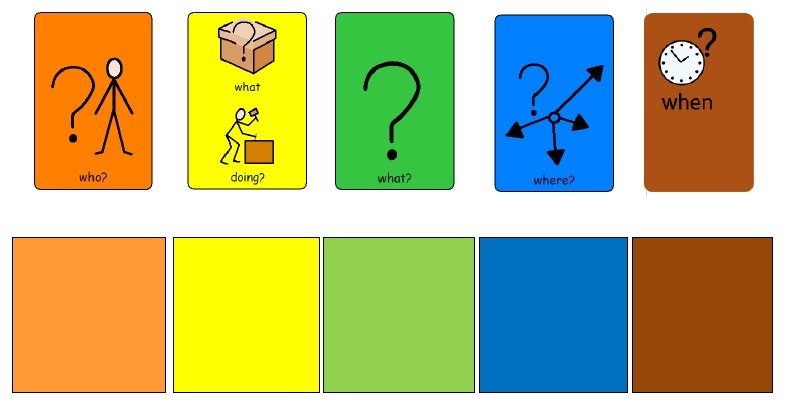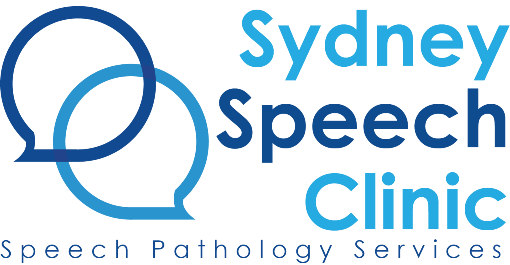Join Alison Bryan, creator of Colourful Semantics, for her Australian Tour in August 2023!
Alison Bryan will be presenting in Australia this August for a practical Colourful Semantics workshop designed specifically for speech pathologists and teaching professionals who are keen to add to their language therapy toolkits using this popular visual support system.
This one day-intensive face-to-face workshop will provide a comprehensive understanding of Colourful Semantics and its application in the clinical and classroom setting. By the end of the workshop, participants will be equipped with the knowledge and tools necessary to implement Colourful Semantics with confidence and creativity.

Who should attend?
Speech Language Pathologists, Learning Support Teams, Classroom Teachers, and Teaching Assistants
Presented Live In-Person by Alison Bryan - the creator of Colourful Semantics
Alison Bryan is a speech and language therapist who developed the Colourful Semantics approach in the 1990s while working with children with language impairments. She is based in the UK and has worked in various settings, including clinics, schools, and hospitals.
Alison has presented at numerous conferences and workshops on the Colourful Semantics approach. Her chapter in the book ‘Language Disorders in Children and Adults’ provides a detailed description of the original case study and theoretical framework that was foundational to this approach originally being developed. Since then she has expanded the scope and application of the approach to a wide range of client groups and settings. Alison has contributed to articles and advised frequently on resource development in the UK.
Alison has published several articles on Colourful Semantics and has presented at numerous conferences and workshops on the topic. She is also a co-author of the book "Colourful Semantics: Thematic Role Therapy for the Treatment of Language Disorders" which provides a detailed description of the framework and its use in therapy.
Alison's work with Colourful Semantics has had a significant impact on the field of speech and language therapy, particularly in the UK, where it is widely used. Her innovative approach has assisted many children to improve their oral and written language skills and has provided speech pathologists and teaching professionals with a valuable tool for both one-to-one and classroom group-based interventions.

What you will learn
- You will gain a solid understanding of the principles and rationale behind Colourful Semantics, its origins, and its role in supporting language development in children with speech and language difficulties.
- You will understand the key components and stages of Colourful Semantics.
- You will learn how best to use this visual support framework across the different components and stages of Colourful Semantics i.e. “who, doing, what, where, who to, what like, why, when & how”. Also learning when and how to structure interventions around these elements.
- You will understand how to determine where to begin based on a child's current language skills and set appropriate goals using Colourful Semantics as part of your language therapy toolkit.
- You will explore a variety of resources and materials available to support therapy sessions and/or classroom teaching.
- In small groups, you will gain hands-on practice with correctly colour-coding sentences of different levels of complexity.
- You will discover how to adapt and modify your Colourful Semantics visual tools to suit the individual needs and learning styles of your clients.
- You will have the opportunity to explore how to effectively collaborate with educators, caregivers, and other professionals in the child's support network to ensure a cohesive and consistent approach to teaching.
- You will explore non standardised ways to track and measure the progress and outcomes of children who you are teaching using the Colourful Semantics framework, and how to adjust the approach as needed.
What is included in the ticket price?
- This is a catered event; morning tea, lunch and afternoon tea will be provided.
- You will have access to the digital slides in colour and will also be provided with black and white hard copies to utilise on the day (please bring a variety of coloured pens/pencils on the day including; orange, yellow, green, blue, brown, pink, purple, black)
Please note that we use Humanitix, a non-profit platform where the booking fee is donated to a children's charity. The booking fee is in addition to the ticket price.
Further Information about Colourful Semantics
Colourful Semantics is a framework for language intervention that uses color-coded visual cues to support the development of language skills. It was developed by Alison Bryan in the 1990s as a way to help children with language impairments to understand and produce more complex sentences.
Some of the more popular articles you can find out more information are:
Christopoulou, M et al (2021) Colorful Semantics in Cypriot-Greek Speaking Children with Autism Spectrum Disorder. Folia Phoniatr Logop 2021;73(3):185-194 [ Randomized control trial]
Doyle, A. (2021) Book Review : NHS Forth Valley (2020) Colourful semantics. A resource for developing children’s spoken and written language skills. In Child Language Teaching and Therapy, 38 (1), 117-118
Hettiarachchi S. (2015) The effectiveness of colourful semantics on narrative skills in children with intellectual difficulties in Sri Lanka. Journal of Intellectual Disabilities. 20(1)18-33.
Bolderson, S., Dosanjh, C., Milligan, C., Pring, T. & Chiat, S. (2011). Colourful semantics: A clinical investigation. Child Language Teaching and Therapy, 27 [3], 344-353
Bryan, A. (1997) Colourful Semantics: Thematic Role Therapy, in S. Chiat, J. Law & J. Marshall (Eds) Chapter 3.2 Language disorders in Children and Adults: Psycholinguistic approaches to therapy. London: Whurr Published Online: 15 APR 2008 DOI: 10.1002/9780470
